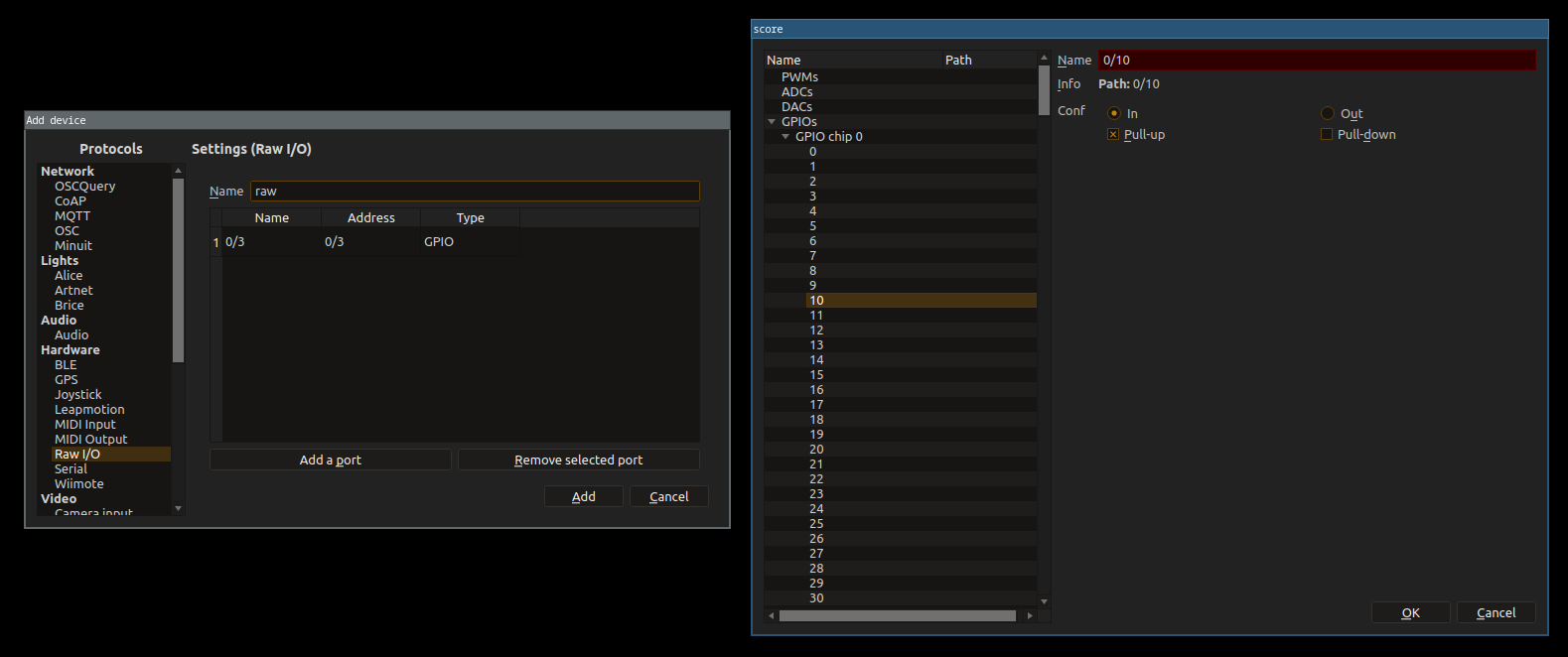
The Raw I/O device allows to leverage the hardware features of an embedded Linux system directly:
- GPIOs
- ADCs
- DACs
- PWMs
and more to come!
This feature is only meaningful when running score on a Raspberry Pi or embedded board with accessible pin headers. As such, it is only available on Linux.
Just like for the ArtNet devices, one adds the used GPIOs, ADCs, etc. : they will show up as accessible addresses.
Configuring the operating system
Usually, on Linux, the raw devices aren’t accessible to a non-root user. It is necessary to perform the following steps:
# 1. If the gpio group doesn't exist, add it
$ groupadd gpio
# 2. Add your username to the group gpio
$ usermod -a -G gpio $USER
# 3. Create an udev rules file to automatically set
# gpio devices to the gpio group if they aren't already.
# To check that:
# $ cd /dev; ls -l | grep gpio
#
# The second column will indicate the group of the /dev/gpiochip0...N files
# which should be "gpio".
#
# Create the file: /etc/udev/rules.d/99-com.rules
# With the following content:
SUBSYSTEM=="gpio", GROUP="gpio", MODE="0660"
# 4. Log-out and log-in again, gpio chips will now be available directly from ossia.